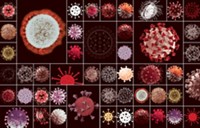Imagine trying last January to grasp all that was coming for us in 2020. Even in February, as the Centers for Disease Control and Prevention’s head of infectious diseases, Nancy Messonnier, warned the US to prepare for a life severely disrupted. Even in March, after National Institute of Allergy and Infectious Diseases director Anthony Fauci gave us the dire and ultimately overly optimistic prediction that as many as 200,000 people in the US could die of the novel coronavirus. Even in April, when the reality set in that many students in the US would learn remotely for the rest of the school year. Even then, the long-lasting, wide-ranging reach of the virus known as SARS-CoV-2 did not sink in for many.
Advertisement
Grab your lab coat. Let's get started
Welcome!
Welcome!
Create an account below to get 6 C&EN articles per month, receive newsletters and more - all free.
It seems this is your first time logging in online. Please enter the following information to continue.
As an ACS member you automatically get access to this site. All we need is few more details to create your reading experience.
Not you? Sign in with a different account.
Not you? Sign in with a different account.
ERROR 1
ERROR 1
ERROR 2
ERROR 2
ERROR 2
ERROR 2
ERROR 2
Password and Confirm password must match.
If you have an ACS member number, please enter it here so we can link this account to your membership. (optional)
ERROR 2
ACS values your privacy. By submitting your information, you are gaining access to C&EN and subscribing to our weekly newsletter. We use the information you provide to make your reading experience better, and we will never sell your data to third party members.
Infectious disease
Covid-19
COVID-19: Science’s greatest test
A year of ingenuity, adaptation, perseverance, and incalculable loss put a spotlight on science and scientists. We examine what the process taught us and how it could affect science going forward
by Lisa M. Jarvis
January 25, 2021
| A version of this story appeared in
Volume 99, Issue 3

Credit: NIAID (micrograph); Lorenzo Casalino and Abigail Dommer, Amaro Lab, UC San Diego (model, left); Alissa Eckert, MSMI; Dan Higgins, MAMS (model, above); Grant and Max Bryson (drawings); Shutterstock
Even today, the magnitude and enduring impact of the novel coronavirus still feel impossible. By early 2021, about 96 million people around the world had been infected with the virus. More than 2 million people—more than 400,000 of them in the US—had died.
Amid the staggering loss, science stepped up. Few of us have witnessed the kind of singular achievement wrought by scientists across industry, academia, and the government. Over the course of the year, researchers dissected the novel coronavirus in detail, cracking open its inner life for all to see and study. They picked apart the ways the pathogen most often spreads, considered the most reasonable strategies to overcome it, and began to tease out why it is so deadly for some people. All the while, they worked on hundreds of COVID-19 tests, launched thousands of clinical trials of potential treatments, and not only discovered but also tested and eventually gained authorization for multiple vaccines.
Their work wasn’t flawless. Science never is. Debates raged as researchers weighed in on issues in and out of their wheelhouses—like how long immunity lasts, the safety of school openings, and the wisdom of widespread screening. Scientists became de facto experts on everything coronavirus, and certain doctors and researchers rose to celebrity status. Even in that rarefied air, their shifting advice, usually based on naturally evolving science, sometimes vexed a public with an insatiable hunger for immediate answers to an unending list of questions.
And their work is not done. It’s increasingly looking like SARS-CoV-2 will become a permanent fixture in our society, which means we will need to keep learning, keep inventing. More frighteningly, this virus isn’t even our worst-case scenario—other, more deadly pathogens are out there waiting for us, Mike Ryan, executive director of the World Health Organization’s Health Emergencies Programme, cautioned during a press conference at the end of 2020. Science will need to prepare for them.
Still, we see around the bend some relief. Vaccines are being rolled out, and as we watch the number of shots increase, our minds drift to simple scenes of a return to normal: squeezing onto a crowded train on the way to work, waving to our kids as they walk amid a crush of classmates into school, clicking our seat belts as we settle in on a flight, throwing open the front door to welcome a beloved family member with a hug.
But even those moments of reverie are tinged with a heavy truth: we are changed.
Science is changed too. The pandemic was the field’s star turn, but it also shed light on its shortcomings. In this issue, we explore what we lost, what we learned, and what we think could come out of the past year.
We consider the way the public perceives science after a year that is both tumultuous and triumphant. We weigh the many ways the culture of science has changed. We highlight the key technical advances that allowed an amazingly fast response to the virus. We examine whether efforts to use old drugs against this new threat were worth it. We chronicle the major scientific milestones. And we honor those the chemistry community has lost to COVID-19.




Join the conversation
Contact the reporter
Submit a Letter to the Editor for publication
Engage with us on Twitter